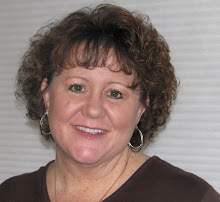
Ask anyone what role women played during World War II and the answer is likely to be that their jobs were diverse – working in factories, providing support for the soldiers, and some serving as nurses on the front lines. But chances are no one will tell you that civilian women served as pilots flying military aircraft for the United States Army Air Forces.
More than 1,000 women were trained as aviation cadets, which enabled the male pilots to serve where they were needed most – in combat. The women were civilians who received approximately 27 weeks of training. And their role, which included flying over 60 million miles in fighter, bomber, transport and training aircraft, was equally important.
Known as the Women Airforce Service Pilots (WASPs), it is said that the group helped pave the way for women to serve as military pilots today. But the women were never recognized for their contributions to World War II.
In fact, it was not until 1977 that the women were granted veteran status. And when 38 of the 1,074 women pilots lost their lives while defending their country, their bodies were flown home in poorly made pine caskets and the funerals were paid for by their friends and families, not the government. None of the families received an American flag.
After the WASPs were disbanded in December 1944, the women’s military records were sealed and labeled secret – keeping them out of the reach of historians. But in the 1980s the records were declassified and people began to learn more about these heroes in American history.
On Saturday these women will be honored in a special tribute hosted by the Bird Aviation Museum and Invention Center in Sagle, just south of Sandpoint. The event, Women of Courage 2010, is open to the public. More than 20 of the nearly 300 still-living women pilots from World War II will be on hand to share their stories of overcoming gender bias to serve their county.
Pamela Bird, of the Bird museum, said she first learned of the Women’s Airforce Service Pilots when a former FAA helicopter pilot visited the museum last fall.
“He asked me, had I ever thought about having an event for the WASPs?” Bird recalled. “I responded that I had not as I didn’t know much about them.”
Coincidentally, Bird met two of the women who had served with WASPs. One, Alyce Rohrer, got her pilot’s license in the early 1940s before receiving her driver’s license.
“She wanted to serve her country in a special way and do something she was great at, and that was flying,” said Bird. “She wanted to be a fly girl and ferry and transport every type of plane the military flew all over the world to the fighter pilots so their time would be freed up to do their job. When the recruiter came along, she signed up and was on her way to serve her country.”
One woman, Betty Jo Streff Reed, writes in her biography that she was barely out of high school when she began to take flying lessons. Of the $18 weekly paycheck she received from working at the Marshall Field department store in Chicago, Reed devoted one half to her flying lessons. After joining the WASPs, Reed writes, she helped pay for the bodies of her 38 fallen comrades to be sent home since the government would not.
“We marched everywhere, we did calisthenics, aerobatics, and all the things the boys did – except for combat training,” writes Reed. “I would have gone into combat though. We were so proud of our country, and we were going to do what was right.”
Mary Ann Martin Wyall writes in her biography that people are now more aware than ever of the important role she and her colleagues played in America’s history.
“Our senior years have enhanced our reputation as true pioneers of women in military aviation,” said Wyall. “The generation of women now in the military realize what the WASP program accomplished in order for them to become part of military aviation in all branches of military service.”
The more Bird learned about these women, the more she wanted to do something to honor them.
“There are less than 300 alive in history. Two have passed away within the last 10 days,” said Bird. “It is time to do something to educate those of today so history won’t be lost, as well as to honor, to thank in a proper way these incredible ladies who have changed history forever.”

No comments:
Post a Comment